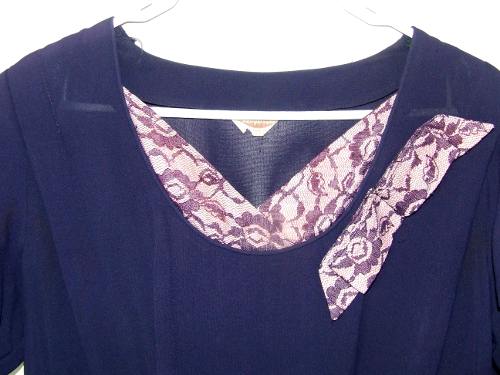I’ve always been a vintage clothing fan. From modest antique fairs and vintage clothing-stocked lofts in New England as a teenager, to today in New Zealand. So one thing I’ll be doing here is posting items from my vintage clothing collection, assembled over 20+ years.
My relationship with sewing has always been more ambivalent. My mom taught me the sewing basics – then declined to go much further with me, even though she used to sew wedding dresses for a living. I fumbled on myself, sewing some Garb back in ye Dayes When I Wore Ye Renaissance Fayre Garb. Later, I took sewing lessons with my friend Gilraen, who is now a seamstress supreme, sewing most of her own wardrobe. Me, I’m still learning, throwing together knit dresses and tops, doing my own alterations.
Vintage love and sewing ambivalence combine in one activity: turning a vintage piece inside-out to see how it’s constructed. Simple-looking things astound me with their hidden detail. So I’ll post these things from the outside – and the inside.
Here’s an example – a mail-order American dress from the late 30s or early 40s. From the good old Sears Roebuck catalog, even. It’s made of a heavy, but slightly translucent, navy-violet crepe, with pink satin details overlaid with navy blue lace. It’s got two small thread belt loops, an indicator that its belt has gone missing. There’s a little sun fading on one shoulder, but otherwise it’s in decent shape.
It’s very simple looking on the outside. Maybe there was a belt at one point.
But look at all the detailing on the inside.
I think the loose threads are the result of laundering. But otherwise it is in excellent condition. Someone was taking care of a “good dress.”
All that piecing for an inexpensive mass-produced garment!
Sewing is engineering, at the end of the day.




